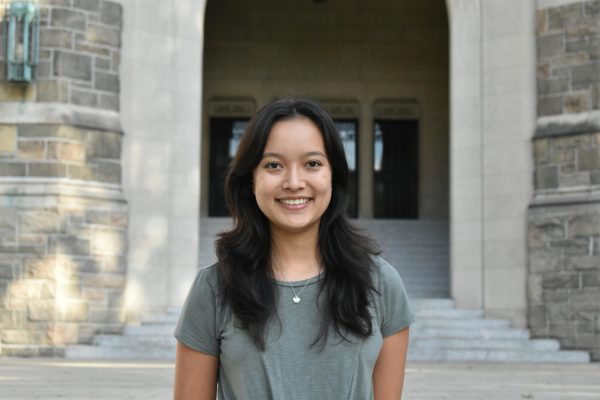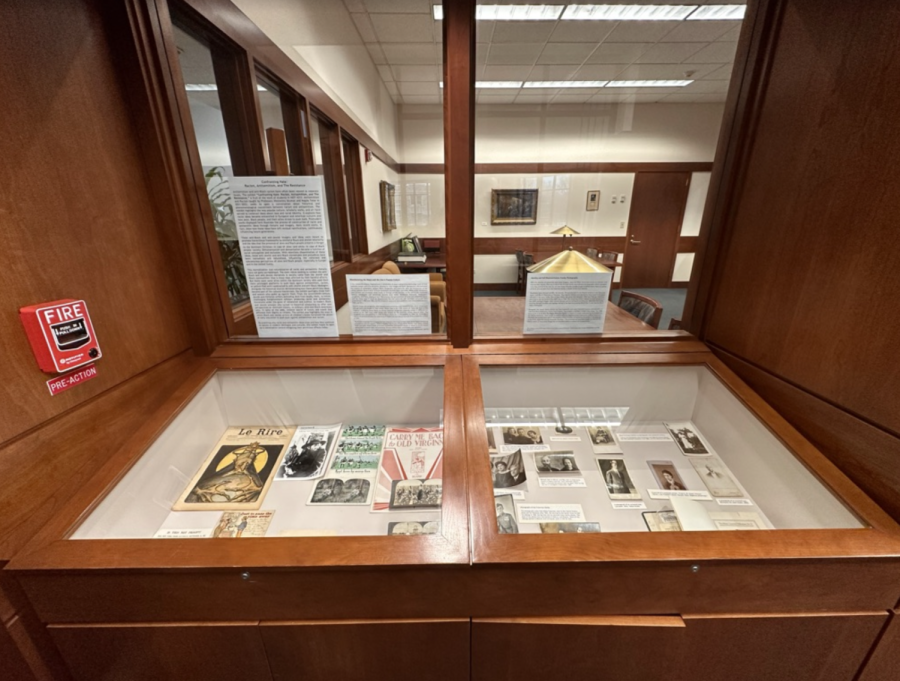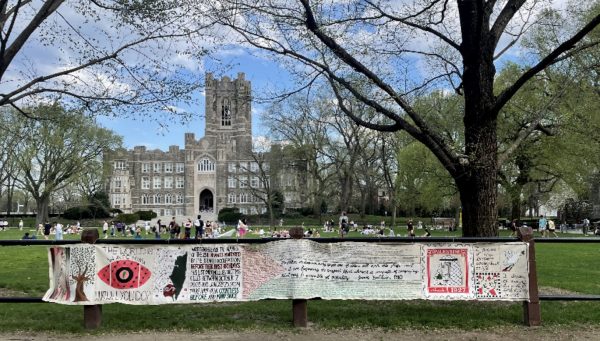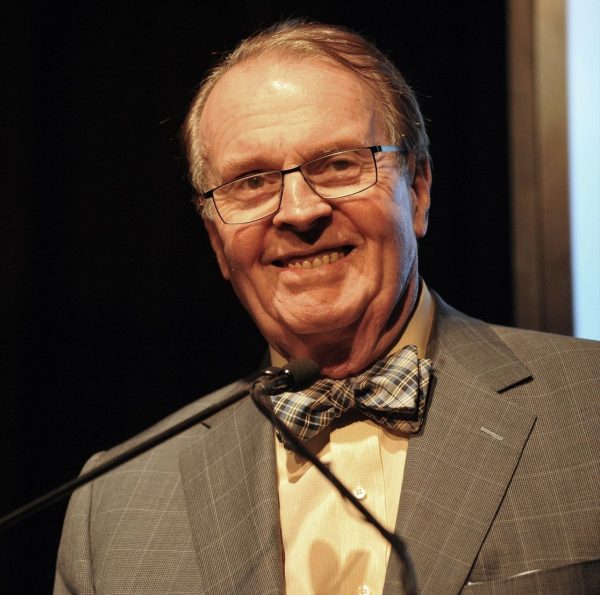Walsh Family Library Presents Exhibits on Antisemitism and Racism
On Jan. 22, Walsh Family Library presented guided tours of two of its current exhibits — “Confronting Hate: Antisemitism, Racism and the Resistance” and “The Remnants of Jewish Life in the Bronx.”
The exhibits are a combined effort of work from Fordham students and professors. “Confronting Hate: Antisemitism, Racism and the Resistance” is curated by Westenley Alcenat, Ph.D., professor in the department of history, Magda Teter, Ph.D., Shvidler chair in Judaic Studies and Lesley East, FCRH ’24. “The Remnants of Jewish Life in the Bronx” is curated by Reyna Stovall, FCLC ’25, with an exhibit of photographs by Julian Voloj curated by Ray Felix.
“Confronting Hate: Antisemitism, Racism and the Resistance” highlights different artifacts from Jewish and Black people. Many of the exhibits have juxtapositions by showing antisemitic and racist artifacts and contrasting them with artifacts that highlight the issues of the time.
During the guided tour of the exhibit, Teter and Alcenat explained the different artifacts of Jewish and Black people. Some of the artifacts included postcards, songbooks, newspapers, magazines, books and other items depending on the time era.
For one of the exhibits, Teter and Alcenat described the contrasting images that some people had of Jewish and Black people by using the artifacts.
“You will see similar ways of caricaturing [Jewish people]… as all of these different stereotypes,” said Teter during the exhibit. She explained that certain features were caricatured for both Jewish and Black people to perpetuate stereotypes.
Teter went on to show contrasting artifacts from the same time period that were actually from Jewish and Black people. “But [these are] photographs of Jewish and Black people of the way they wanted to be seen. The way they wanted to see themselves and represent themselves for their friends and their families,” said Teter.
“Here is the [Jewish person] as the antisemite sees them and the [Black person] as the racist sees them, and here is how the people see themselves,” said Alcenat. “Whether you see it as them speaking back or just living their lives.”
East originally got involved in the exhibit because of a class she took called “Antisemitism and Racism” which was co-taught by Teter and Alcenat.
“I was in the class, and it was my favorite class of the semester. I was really inspired by Professor Alcenat and Professor Teter, and they asked for volunteers for their summer project,” said East.
East said that the class looked at two separate issues, antisemitism and racism, and was able to bridge the gap between the two of them.
Before East started working on the project in the summer, she was able to contribute to the research in the spring since one of the class projects was curating a description for the artifact.
“Once we got into the actual exhibit, we had edited some things, but all of the core of those descriptions were done with student involvement which was really great… The fact that we had student participation was really awesome,” said East.
“The Remnants of Jewish Life in the Bronx” was inspired by a woman named Ellen Meshnick, who donated an archive of her parent’s things to the Center for Jewish Studies.
“Looking at all of the materials in the archive and some of the other items in the special collections department, [Dr. Teter and I] wanted to create an exhibit to showcase the unique period of time when Jews were the most populous group in the Bronx and what life for them would have looked like,” said Stovall.
Stovall explained that a lot of the research centered around locating where each item originated in the Bronx and building the history around that.
“We created spreadsheets and maps to see which items were near each other and then used that information to look into the history of the items,” said Stovall.
“I believe that exhibits like this save history that would otherwise be lost,” said Stovall. “A lot of people are unaware that Jews were at one point the biggest group in the Bronx, and by telling these stories, we are not only educating the Fordham community about the history of the Bronx, but sparking conversations that can in turn continue to educate others outside of Fordham as well.”

Emma Kim is a junior from Pittsburgh. She is double majoring in economics and English. She started as a contributing writer for news in her freshman year...










































































































































































































